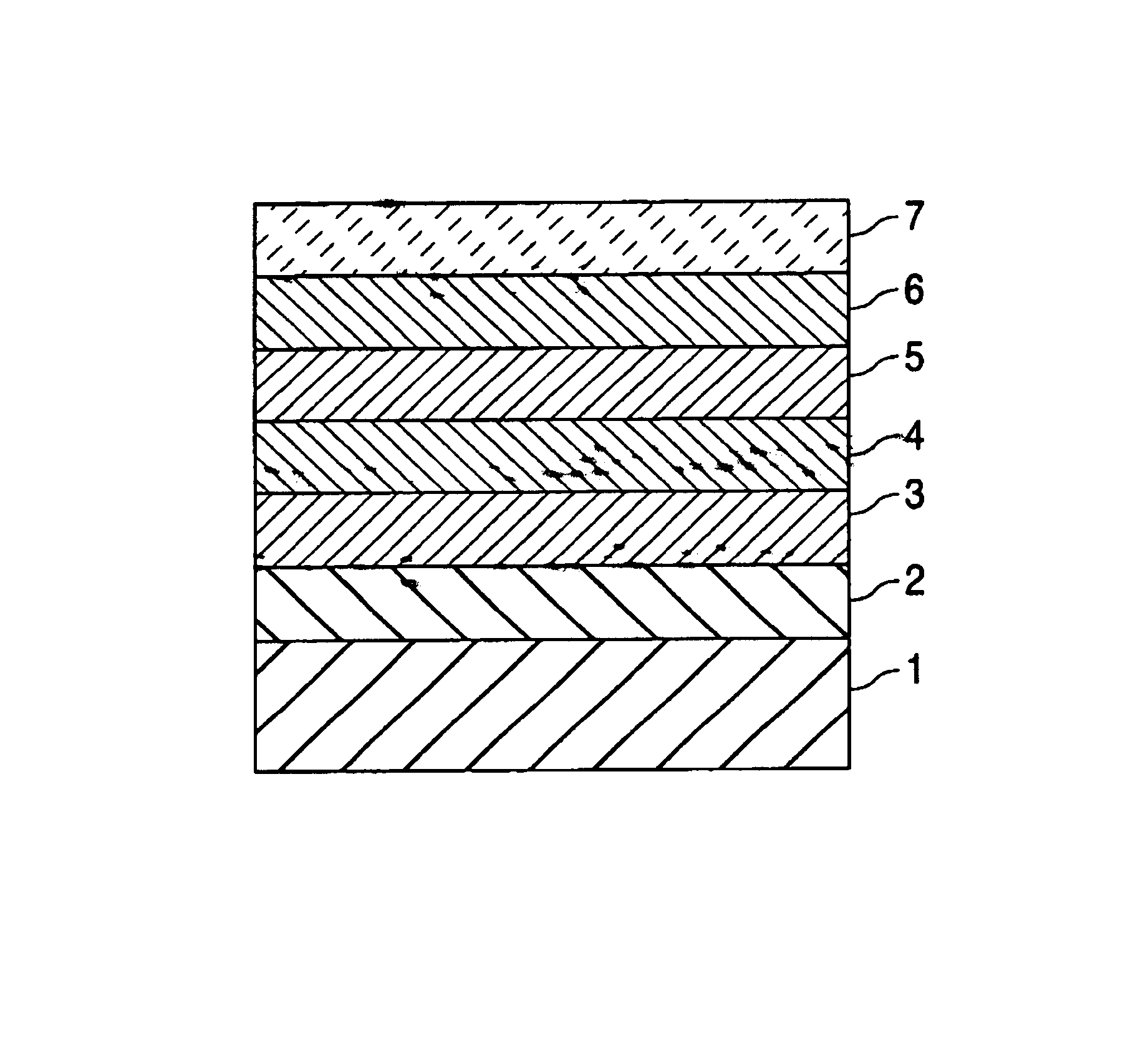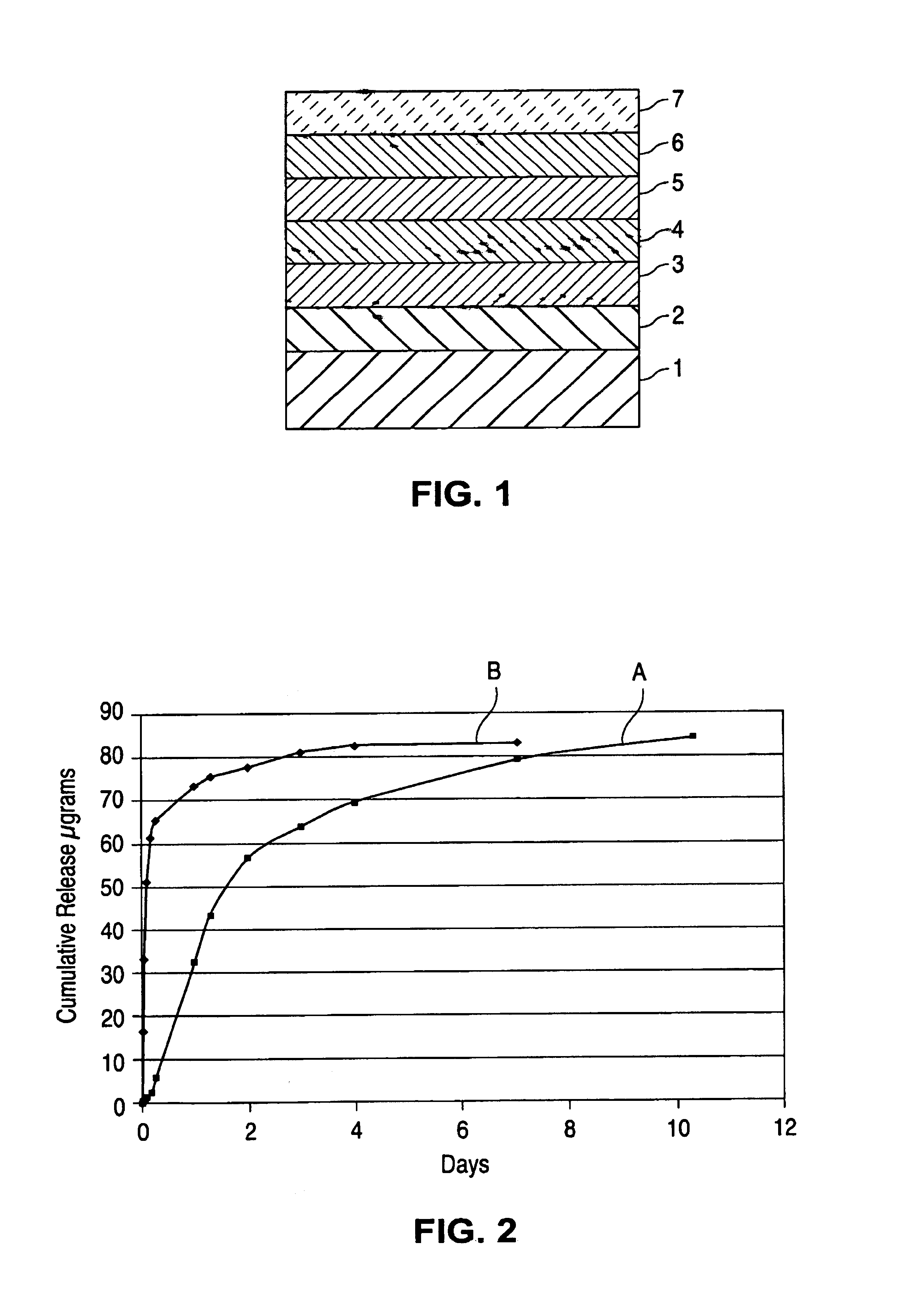Coatings for implantable medical device containing polycationic peptides
a technology of polycationic peptides and medical devices, which is applied in the field of coatings for implantable medical devices, can solve the problems of obstructing the conduit, affecting the patient's health, and affecting the patient's comfort, and achieving the effect of reducing the risk of infection, and reducing the patient's comfor
- Summary
- Abstract
- Description
- Claims
- Application Information
AI Technical Summary
Problems solved by technology
Method used
Image
Examples
example 1
[0050]The outer surface of a bare 13 mm TETRA® stent (available from Guidant Corporation) was thoroughly cleaned by sonication in isopropyl alcohol (applying ultrasound frequency to the stent immersed into the isopropyl alcohol bath) followed by treatment by an argon plasma using techniques and equipment known to those having ordinary skill in the art.
[0051]A solution of poly(butyl methacrylate) PBMA in a blend of organic solvents (solution I) was prepared by mixing the following components:[0052](1) about 5 mass % of PBMA having weight-averaged molecular weight (Mw) of about 649,000;[0053](2) about 35 mass % of toluene;[0054](3) about 10 mass % of methylethylketone; and[0055](4) the balance, xylene.
[0056]A first composition was prepared by mixing the following components:[0057](a) about 40 mass % of solution I;[0058](b) about 10 mass % of cyclohexanone;[0059](c) about 15 mass % of methylethylketone;[0060](d) about 15 mass % of methylisobutylketone; and[0061](e) the balance, xylene....
example 2
[0104]Stents coated as described above were tested for cumulative amount of the drug released. The stents were immersed in a phosphate buffered saline solution having 1 mass % of sodium dodecyl sulfate. A sample of the solution was taken every 24 hours and analyzed chromatographically (by HPLC) for the amount of R7 released. As seen from the release profile shown by FIG. 2, the rate of release from the sandwich coating (curve A) was substantially slower than for a control coating (curve B), particularly within the initial period of exposure of the stent to the buffer solution. The control coating comprised a EVAL matrix incorporating R7, where the amount of R7 was about 25 mass % of the dry matrix.
example 3
[0105]The stent was coated with a primer layer and a first drug layer as described in Example 1. A solution of P(BMA-AA) copolymer in a blend of organic solvents (solution III) was prepared, by mixing the following components:[0106](1) about 5 mass % of P(BMA-AA) copolymer containing about 96.5 molar % units derived from butyl methacrylate and about 3.5 molar % units derived from acrylic acid, the P(BMA-AA) polymer having M, of about 340,000; and[0107](2) the balance, DMAC.
[0108]A first composition was prepared by mixing the following components:[0109](a) about 40 mass % of the P(BMA-AA) polymer solution (solution III described above);[0110](b) about 25 mass % of methylethylketone;[0111](c) about 25 mass % of methylisobutylketone; and[0112](d) the balance, xylene.
[0113]Overall, the first composition contained about 2 mass % of P(BMA-AA) polymer, about 38 mass % of DMAC, about 25 mass % of methylisobutylketone, about 25 mass % of methylethylketone, and the balance, xylene.
[0114]The f...
PUM
| Property | Measurement | Unit |
|---|---|---|
| Polymeric | aaaaa | aaaaa |
Abstract
Description
Claims
Application Information
 Login to View More
Login to View More - R&D
- Intellectual Property
- Life Sciences
- Materials
- Tech Scout
- Unparalleled Data Quality
- Higher Quality Content
- 60% Fewer Hallucinations
Browse by: Latest US Patents, China's latest patents, Technical Efficacy Thesaurus, Application Domain, Technology Topic, Popular Technical Reports.
© 2025 PatSnap. All rights reserved.Legal|Privacy policy|Modern Slavery Act Transparency Statement|Sitemap|About US| Contact US: help@patsnap.com



